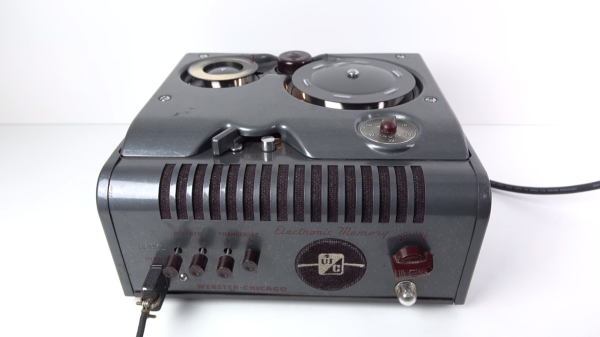For a brief period in the 1940’s it might have been possible for a young enamored soul to hand his hopeful a romantic mix-spool of wire. This was right before the magnetic tape recorder and its derivatives came into full swing and dominated the industry thoroughly until the advent of the compact disk and under a hundred kilogram hard disk drives. [Techmoan] tells us all about it in this video.
The device works as one would expect, but it still sounds a little crazy. Take a ridiculously long spool of steel wire the size of a human hair(a 1 hour spool was 2.2km of wire), wind that through a recording head at high speed, magnetize the wire, and spool it onto a receiving spool.
If you’re really lucky the wire won’t dramatically break causing an irreversible tangle of wire. At that point you can reverse the process and hear the recorded sound. As [Techmoan] shows, the sound can best be described as… almost okay. Considering that its chief competition at the time was sound carved into expensive aluminum acetate plates, this wasn’t the worst.
The wire recorder lived on for a few more years in niche applications such as airplane black boxes. It finally died, but it does sound like a really fun couple-of-weekends project to try and build one. Make sure and take good pictures and send it in if any of you do.
Continue reading “A Tech That Didn’t Make It: Sound On Stainless Steel Wire”


 [Nick]’s grandfather was quite the old school hacker. In the 1940s, he built his own wire recorder and microphone to capture everything from his children’s Chirstmas wishes to his favorite songs and programs from the radio. Only 20 or so spools have survived and were doomed to silence until [Nick] was able to
[Nick]’s grandfather was quite the old school hacker. In the 1940s, he built his own wire recorder and microphone to capture everything from his children’s Chirstmas wishes to his favorite songs and programs from the radio. Only 20 or so spools have survived and were doomed to silence until [Nick] was able to 









